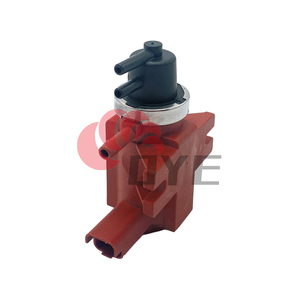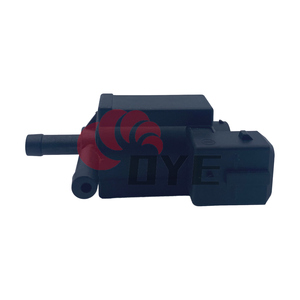(1670 products available)


































































































































































Single Turbo
Single turbochargers are the most common type of turbocharger found in vehicles today. Single turbos use a single turbine and compressor wheel to force extra air into the combustion chamber. This helps create more power as the engine burns more fuel and creates more power. Single turbos are simple and reliable, which is why they are used in most factory-built cars. They also allow for plenty of upgrades and customization for those looking to get more power out of a vehicle.
Twin Turbo
Twin turbochargers utilize two turbine and compressor wheel sets, one for each bank of cylinders in V-style engines. This allows for more even power distribution and quicker spool times, as one smaller turbo can handle low-end power while a larger turbo focuses on high RPMs. Twin turbos provide a boost in performance without sacrificing drivability. Some manufacturers choose to go with twin turbos for added power and efficiency, which is great for sports and luxury vehicles.
Variable Geometry Turbocharger (VGT)
Variable geometry turbochargers are designed to improve performance and efficiency, especially in diesel engines. VGTs have adjustable blades that change the angle of attack depending on engine speed. This allows for better airflow through the turbine housing, resulting in quicker spool times and reduced turbo lag. While VGTs are more complex than traditional fixed geometry turbos, they provide significant benefits in emission control and overall engine performance.
Quad Turbo
Quad turbochargers are reserved for high-performance vehicles and hypercars. These incredible machines utilize four turbochargers to produce mind-boggling amounts of power. Typically, a pair of turbos is dedicated to each bank of cylinders, similar to a twin setup. However, some quad-turbo cars use four smaller turbos for an even more refined power band. Quad turbos allow for a smoother power delivery and an insane power ceiling. With four turbos working in unison, even the most demanding engines can achieve their performance goals effortlessly.
BW turbo specifications vary from one model to another, but generally, they have the following features:
Flow Capacity
The amount of air the turbocharger can move is referred to as flow capacity. It's expressed in cubic feet per minute (CFM). Higher flow rates allow for greater air intake, which can lead to increased power output.
Pressure Ratio
The pressure ratio measures how much the turbo increases the air pressure entering the engine compared to the atmospheric pressure. A higher pressure ratio indicates more efficient compression of air, resulting in better engine performance.
Wheel Material
The wheels in the turbocharger are often constructed from aluminum or titanium. Aluminum is more common due to its lightweight and cost-effectiveness. Titanium offers superior strength and heat resistance, albeit at a higher price point.
Bearing Type
Turbochargers utilize bearings to ensure smooth rotational motion of the turbine and compressor wheels. There are several types of bearings, including journal, ball, and ceramic. Each type has its advantages in terms of durability, low friction, and maintenance requirements.
Wastegate Type
The wastegate regulates the turbocharger's boost pressure by diverting some exhaust flow. Wastegates can be internal or external, with electronically controlled options available as well. The type of wastegate impacts turbo response time and overall engine performance.
Actuator Type
The actuator controls the wastegate position, influencing boost levels. Actuators can be pneumatic, electric, or hydraulic. Choosing the right actuator type ensures precise boost control and optimal engine performance across various driving conditions.
Here are some ways to maintain BW turbo parts:
Regular Oil Changes
The BW turbo relies on clean oil for lubrication and protection against wear. Routine oil changes remove contaminants while replenishing the system with fresh oil. This practice ensures optimal lubrication and longevity of turbo components.
Quality Oil and Filter
Using high-quality oil and filters is crucial for the turbo's health. Opt for oils meeting manufacturer specifications, preferably with additives designed for turbochargers. Genuine or high-quality aftermarket filters prevent impurities from entering the oil system, safeguarding the turbo.
Cool Down Periods
Allowing the turbo to idle for a few minutes before shutdown is essential, especially after heavy use. This practice lets residual heat dissipate, reducing the risk of component damage from heat stress.
Inspect Cooling System
The BW turbo relies on proper cooling for temperature management. Regularly check the coolant level, hoses, and radiator for leaks or damage. Addressing cooling system issues promptly prevents overheating and protects the turbocharger.
Monitor Boost Pressure
Maintaining boost pressure within recommended limits is vital for the turbo's performance and durability. Use a boost gauge to ensure the wastegate and actuator function correctly, regulating boost levels effectively.
Avoid Excessive Load
Prevent overloading the vehicle, as excessive strain can lead to turbo overworking and premature wear. Adhere to manufacturer guidelines for towing and payload capacities to preserve the turbo's integrity.
Professional Inspections
Periodically, have the turbocharger and related components, like the exhaust and intake systems, inspected by a qualified mechanic. They can identify and address potential issues before they escalate, ensuring the turbo remains in peak condition.
Choosing the right BW turbo can be a daunting task, but it doesn’t have to be. Here are some factors to consider:
Engine Size and Type:
The size and type of engine in the vehicle should be considered when selecting a BW turbo. Generally, smaller engines will benefit from a turbo with a lower displacement, while larger engines can utilize a turbo with a higher displacement. Additionally, the fuel type used in the engine should be considered, as some turbos are designed specifically for gasoline or diesel fuel.
Driving Style:
Driving style is another important factor to consider when selecting a BW turbo. For example, those who drive aggressively and require quick acceleration will need a turbo that provides more boost pressure than one who drives leisurely. Likewise, those who do a lot of highway driving will want a turbo that performs well at higher speeds, while one that offers good low-end torque would be preferable for city driving.
Vehicle Weight:
The weight of the vehicle should also be considered when choosing a BW turbo. Heavier vehicles will require a more powerful turbo to achieve desired performance levels, whereas lighter cars can get by with less power.
Budget:
Finally, budget is always an important consideration when selecting any aftermarket parts, including turbos. BW turbos range in price depending on size and features, so it’s necessary to determine a budget before shopping around.
Some people attempt to replace and repair turbos by themselves. This section will help explain how to DIY and BW Turbo replace. First, gather all the necessary tools for the job. These include a ratchet and socket set, torque wrench, 8mm and 10mm nuts, circlip pliers, new oil feed and return lines, and new gaskets. It is also advisable to have an oil catch pan and a flashlight when replacing BW Turbo.
Ensure the engine is cool before starting the process. Remove the plastic engine cover and locate the turbo. One can use the flashlight for a better view. Next, drain the oil by removing the oil drain line. This line is underneath the turbo and is held by 8mm nuts. One can also remove the oil feed line, which is located on top of the turbo.
The next step is removing wastegate Actuator. This might be a little tricky, but it can be done. Remove the Actuator from the turbo and set it aside. One can also remove the Actuator without disconnecting it from the arm. The next step is removing the intake pipe. One might need to remove some air box ducting to gain access.
The next step is removing the exhaust downpipe. Depending on the vehicle, one might need to use a 10mm socket to remove several nuts or an 8mm hex. After that, locate and remove the turbo mounting bolts. These bolts hold the turbo to the manifold. Use a 12-point 10mm socket and 3/8 ratchet to remove the bolts. One might need a 10mm 12-point deep well socket to remove the bolts located underneath the turbo.
Once the bolts are removed, the old turbo can be taken out. This is the most difficult part of the process. It is recommended to follow the steps in reverse to install the new turbo. When installing the new turbo, ensure that all gaskets and seals are new to avoid future problems. Reconnect all lines and pipes. Make sure everything is tightened properly to avoid leaks.
Q1. Are there any common problems with the BW turbo?
A1. Yes, there are some common issues people might have with BW turbos. These include the turbo failing to spin, excessive smoke coming out of the exhaust, strange noises like grinding or rattling, and the turbo taking a long time to spool up. The good news is that BW turbos are designed for heavy use, so they can handle many problems that regular parts might not be able to.
Q2. Can anyone install a BW turbo, or does it require a professional?
A2. While it is possible for someone without professional training to install a BW turbo, it is highly recommended that a professional do it. Proper installation of the BW turbo is crucial for the performance of the vehicle. A poorly installed turbo can lead to many problems down the road. Plus, the professional will make sure everything is done safely and correctly.
Q3. What are some tips for maintaining a BW turbo?
A3. Maintaining a BW turbo is important for keeping it in good shape. Be sure to change the oil regularly, as clean oil is important for the turbo to work well. Using quality fuel will help, too, since it prevents issues and keeps the turbo running smoothly. It's also a good idea to let the car idle for a bit before turning off the engine, especially after hard driving. This gives the turbo time to cool down. Keeping the air filter clean is important, too, since good airflow is key for turbo performance.